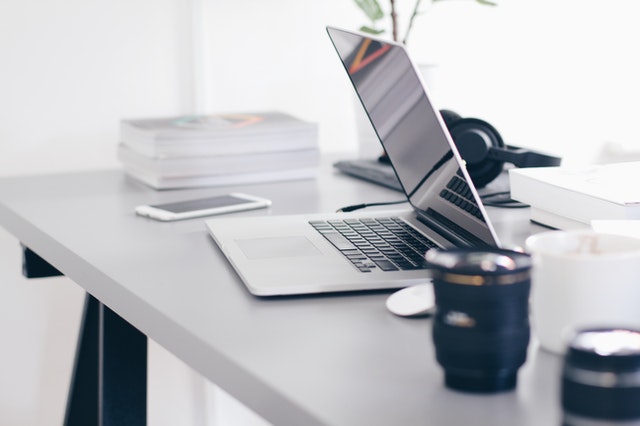Article Name
The future of the world of work
Published: March 18, 2021
How will the future world of work look like? This is a question I asked myself almost a year ago. With no end in sight of the COVID-19 pandemic at the time, it already seemed that a hybrid working environment will remain in place for some time to come, if not forever.
If there is one thing that the COVID-19 pandemic has taught us all, is that change can be achieved in a very short time. Where, for many years, there has been talk about how the future of work will look like in a digitally enhanced environment, companies had to suddenly stop reminiscing about this in 2020 and apply it… almost instantly. It was a social experiment of unprecedented scale.
Almost overnight, traffic died down, office buildings closed, and people had to work from home.
We went from one extreme to another; from working full-time at the office, to working full-time from home.
As much as there might be supporters for either of these scenario’s, keeping to either of these extremes, might not be the answer as to how the future world of work might look like.

We all know that the world of work post-pandemic (in the AD era, “after da virus!”) is going to look different, it MUST be different, from the one we come from (the BC era, “before corona”). We do not want people to waste unnecessary commuting time in rush hours. We do not want to lose the productivity gains that remote working has brought us. We do not want to lose the effective engagement that digital tools have delivered. And we shall again apply the philosophy with which we went into the remote working environment: freedom in a framework, give wide central guidelines, but then trust the teams to figure out the detail.
I am often asked what portion of staff will continue to work from home, what our rules and policies are going to be post-pandemic. My answer is always that it will be an intelligent blend between remote work and office work. Some work is just better done from home. And some is just better in a team environment at the office. But I would expect that, in the fullness of time, a small portion of our staff, perhaps about 10%(?) will work (almost) permanently from home. In the aftermath of the worst of the pandemic, that portion might be bigger, as we will encourage – even require – vulnerable staff with co-morbidities to not come to the office for quite some time, but longer-term, it will be intended for roles where it just makes sense to rather work from home. Then there will also be a small portion, perhaps again about 10% of employees, who will work (almost) permanently at the office. This will again be jobs which are of such a nature that it can only be performed effectively in an office environment. A receptionist is probably the ultimate example – the role can only be performed effectively at the office. Or it might be those staff for which their home situation is such that it is difficult to work there. But I would expect the majority of us, the 80%, to work in the office at times and from home at other times. I would expect the ‘average’ person’s split between home and office to be about 50:50, but it can range from 80:20 to 20:80.
You might be wondering if most staff could be expected to spend 50% of their time at the office, now that everyone is so used to working from home. I must admit that I am guessing – we do not know – but I believe that we should not fall into the trap of thinking that what is currently the norm will continue to apply in future. I think we will be surprised at how many of us would eventually again work from the office, some of the time. Especially if we make our office environments vibrant and nice. Because we are an intensely social species, we need community, not confinement, but we should not be so stupid as to waste unnecessary time commuting. Most of us will hopefully intelligently dodge the morning rush hour, but we should allow and trust our teams to figure this out. What we are interested in as a business is a high-quality output – we do not care so much about how it is achieved. And, like all things in life, individuals and teams will eventually end up with the kind of flexible environments that they deserve.

That brings us to the whole issue of how the offices of the future should look. Over the past century, office environments went through phases. A generation or two ago, offices were boxes – cubicles or four walls, lots of separation. Then the pendulum swung to the other side, extreme open areas. I remember, in my early working days at a different employer, how we all sat in neat rows with no separators whatsoever. I used to joke to outsiders who visited our offices that we were like galley slaves and that, if the visitor waited long enough, he would see the guy with the whip coming down the aisle. It was good for collaboration and saving space, but oh, you got distracted all the time and often needed earphones to focus. I believe a good office environment, one that is fit for the 21st century, needs different kinds of spaces. It needs consultation rooms of various sizes, for private 1:1s to bigger team meetings. And I can imagine in a post-pandemic era, where many team members might not be there physically, most meetings will be a blend of physical and digital, where some of the participants are together at the office, and some are remote, hence lots of video-conferencing facilities. It needs open areas, where we spend most of our time, where our normal workspaces are, good for team building and collaboration. It also needs chill spaces, to relax, or to have informal meetings: “Let’s go grab a flat white at the coffee shop and talk about …”. It needs reception rooms where we receive outside guests and members. A Wealth business, especially, needs nice reception areas, good coffee, and private consultation spaces with big screens. And then – and this is where many office environments have fallen short in the past during the extreme open-area phase – it needs private cubicles where people can go to focus, completely undisturbed, to do deep-thinking work. I can imagine that this is often the work that will be done at home, but we are not always at home, nor do we always want to travel home to complete a job.

We shall probably have more roaming desks for those staff that are only at the office for a small portion of their time, but we must be careful here – humans like ownership. “My parking space”. “My desk”. “Portraits of my loved ones”. “My pot plants”. We should not mess around with this. It might feel like waste and it probably is. But what we “lose” with desks being empty much of the time, we will win with people feeling “there is that special place in the office for me, I like coming in to the office from time to time, I belong”. We should just make it nice. Green. Light. Vibrant. The smell of coffee. And I would like our teams at the head office to use our beautiful gardens more in summer, it can be nice for breakfast meetings.
What are office hours going to be like in future? This is where we need to push ourselves into a new post-pandemic paradigm. I think our “normal” working hours in our member service areas should be from 06:00 until 20:00 because most professionals only have time to tend to their personal financial affairs before or after what is still known as “traditional working hours”. The 08:00-to-16:00-thing is something that belongs to a different era very long ago when people needed daylight to work. We should make it one of our professional differentiators. Our teams can again work out the detail, but it will probably mean that certain team members will work from 06:00 to around 14:30 say, others will work from around 11:30 to 20:00 say, and the rest the more usual 8:00 to 16:30. The teams can decide how many are required on each shift. And people can and should rotate between shifts during the year, it would be refreshing. The early and late shifts will be the ones that will mostly work from home.
It has been said that it took a virus to pull most of us firmly into the 21st century, into a world of digital tools. I am one of the examples of this – I am certainly a creature of habit, lazy to adjust, at times a late adopter of technology. I am continuously amazed by what one can do these days. On certain days I have a very early meeting with our team in Australia, followed by a visual 1:1 with a team member sitting at home in Cape Town. This might be followed by a webinar where participants from all over the world log on. The person presenting might be in Belgium, with the organiser sitting in Manchester in England. In the afternoon, we might have a big town-hall session in which team members from all across the country participate, always so brilliantly facilitated by our PPS Academy. I have heard many times from staff members that they feel more connected and more productive than ever, even though they are physically far removed. I ask myself: what would we have done in this lockdown environment before the era of the internet? It is difficult to contemplate. Maybe it is only us Boomers or Generation X-ers that are still astonished by what is possible with technology these days, the Millennials or Generation Z-ers will probably just shrug their shoulders and say: What is there to be amazed about, this is just normal! Cometh the technology, cometh the crisis! Yet, some of the shifts in digitalisation and mindsets took us only a few weeks, which otherwise might have taken us years.
Even though we do not have a clear picture yet as to how our future world of work is going to look like exactly, we do know one thing, it is looking bright!
https://www.pps.co.za/ceo-blog/the-future-of-the-world-of-work

